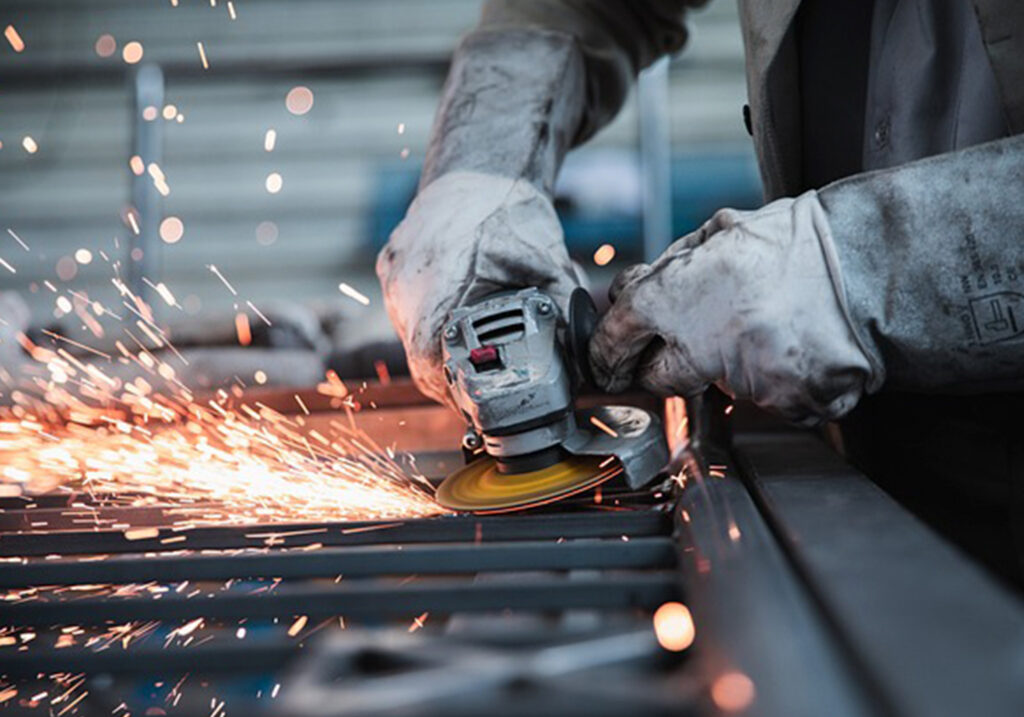People have been raving about steel as a building material. After all, they are known to be durable and cost-effective. Buildings made of steel last a long time and are highly customizable, making them highly sought after by builders and property owners alike.
However, all these would not be possible without steel fabricators’s help. But what do steel fabricators do exactly?
Read on.
Understanding Steel Fabrication
Steel fabrication is the process of transforming raw steel into finished products used in construction, manufacturing, and various industries. This process involves cutting, bending, and assembling steel materials to create structures and components that meet specific design requirements. Steel fabricators play a crucial role in this process, applying their expertise to produce durable and precise steel products that support numerous sectors, from infrastructure development to industrial applications. The fabrication of steel requires a combination of technical knowledge, specialized equipment, and a deep understanding of metallurgy to ensure that the final product is strong, reliable, and suited for its intended use.
The fabrication process starts with raw steel, which can come in different forms such as sheets, beams, or bars. Depending on the project requirements, fabricators use specialized techniques and machinery to shape and modify the material. This can include cutting using high-powered lasers, welding to join different sections, and applying protective coatings to prevent corrosion. Precision is essential in each step of the process to ensure that the steel components fit together seamlessly and function correctly in their applications. Modern fabrication facilities often use computer-aided design (CAD) software and automated machinery to enhance accuracy and efficiency, reducing material waste and improving production speed.
Beyond the technical aspects, steel fabrication is a field that demands extensive planning, safety considerations, and quality control. Each fabricated piece must meet industry regulations and client specifications, requiring rigorous inspection and testing. Fabricators must also consider environmental factors, such as sustainability and waste reduction, as they develop steel products. With advancements in technology and increasing demands for high-performance materials, steel fabrication continues to evolve, making it an indispensable part of modern construction, infrastructure, and manufacturing industries.
The Role of Steel Fabricators
Steel fabricators are highly trained professionals responsible for manipulating steel into specific shapes and structures. They work in various settings, including workshops, construction sites, and manufacturing plants, depending on the nature of the project. Their primary responsibility is to follow blueprints and technical drawings to cut, weld, and assemble steel components accurately. Their role requires not only technical expertise but also a keen eye for detail and precision to ensure that every piece meets the required specifications.
One of their main tasks is cutting steel using different techniques such as sawing, shearing, or laser cutting. Each method is chosen based on the thickness and type of steel being used. Once the steel is cut to the required dimensions, it is then shaped through bending or rolling processes. These processes are crucial in creating complex structures and components used in buildings, bridges, and machinery. Welding is another critical aspect of steel fabrication, as it joins different steel pieces to create sturdy and reliable structures. This process demands precision, as weak or improper welding can compromise the integrity of the final product.
Fabricators also ensure that the final product is treated with protective coatings to prevent corrosion and extend its lifespan. Various coating techniques, such as galvanizing or powder coating, are used to enhance the durability and appearance of steel components. Additionally, fabricators often collaborate with engineers and project managers to ensure that each piece meets design specifications and safety standards. As technology advances, fabricators continue to refine their skills, integrating automation and innovative methods to improve efficiency and maintain high-quality standards in steel fabrication.
Types of Steel Fabrication
Steel fabrication is a diverse field with various specializations. Structural steel fabrication focuses on creating components used in buildings, bridges, and other large-scale structures. These fabricators work closely with engineers and architects to develop load-bearing steel frameworks that provide strength and stability to constructions. Industrial steel fabrication, on the other hand, involves producing machinery and equipment used in sectors like mining, automotive, and shipbuilding.
Another key area is custom steel fabrication, where fabricators create specialized products tailored to unique project requirements. This type of fabrication is common in artistic and decorative applications, such as custom railings, sculptures, and architectural details. Precision is paramount in custom fabrication, as these projects often require intricate designs and exact measurements.
Tools and Techniques in Steel Fabrication
Steel fabrication relies on advanced tools and techniques to achieve precision and efficiency. Computer Numerical Control (CNC) machines have revolutionized the industry by allowing for automated cutting, drilling, and welding processes. CNC technology enhances accuracy, reduces material waste, and speeds up production times, making it an essential tool for modern steel fabricators.
Other common tools used in fabrication include plasma cutters, grinders, and hydraulic presses. These tools enable fabricators to manipulate steel into various shapes and sizes while ensuring a high-quality finish. Welding remains one of the most critical techniques, with different methods such as MIG, TIG, and arc welding being used depending on the project’s requirements.
Importance of Steel Fabrication in Construction
Steel fabrication plays a vital role in the construction industry, as steel is one of the most durable and versatile building materials available. Skyscrapers, stadiums, and bridges all rely on fabricated steel components for their structural integrity. The strength-to-weight ratio of steel makes it an ideal choice for constructing large and complex structures, allowing architects and engineers to design innovative and sustainable buildings.
In addition to its strength, steel is also highly resistant to environmental factors such as fire, wind, and earthquakes. Fabricated steel structures can be designed to withstand extreme conditions, making them a preferred choice for infrastructure projects in areas prone to natural disasters. Furthermore, steel is recyclable, contributing to sustainability efforts in the construction industry.
The Manufacturing Process of Steel Fabrication
The manufacturing process of steel fabrication involves several stages, each crucial to producing high-quality steel components. It begins with the design phase, where engineers and designers create detailed blueprints and 3D models to guide the fabrication process. Once the design is finalized, fabricators select the appropriate type of steel and begin cutting and shaping it according to specifications.
After the initial shaping, the steel pieces are assembled through welding, bolting, or riveting. Quality control measures are implemented at each stage to ensure the components meet industry standards and safety regulations. The final step often involves surface treatment, such as galvanization or painting, to protect the steel from corrosion and enhance its durability.
Challenges Faced by Steel Fabricators
While steel fabrication is essential in various industries, it also presents several challenges. One of the main difficulties is maintaining precision while working with large and heavy steel components. Even a minor error in measurement or alignment can compromise the integrity of the final structure. Fabricators must rely on advanced measuring tools and strict quality control processes to ensure accuracy.
Another challenge is the high cost of raw materials and equipment. Steel prices fluctuate based on market demand and availability, affecting the overall cost of fabrication projects. Additionally, investing in cutting-edge machinery and technology can be expensive, but it is necessary to remain competitive in the industry.
Safety is another critical concern in steel fabrication. Working with heavy materials, high temperatures, and powerful machinery poses risks to fabricators. Proper training, protective equipment, and adherence to safety protocols are essential to preventing workplace accidents and ensuring a safe working environment.
The Future of Steel Fabrication
The steel fabrication industry is continually evolving, driven by advancements in technology and increasing demand for high-performance materials. Automation and robotics are expected to play a larger role in fabrication processes, improving efficiency and reducing labor-intensive tasks. 3D printing technology is also making its way into the industry, allowing for more intricate and customized steel designs.
Sustainability is another key focus for the future of steel fabrication. As industries strive to reduce their carbon footprint, the use of recycled steel and eco-friendly fabrication methods is gaining traction. Companies are exploring ways to minimize waste, optimize energy consumption, and develop more sustainable production techniques.With ongoing technological advancements and a growing emphasis on sustainable practices, steel fabrication is poised to remain a crucial component of modern infrastructure and industrial development. As the industry continues to innovate, steel fabricators will play an essential role in shaping the built environment of the future.

